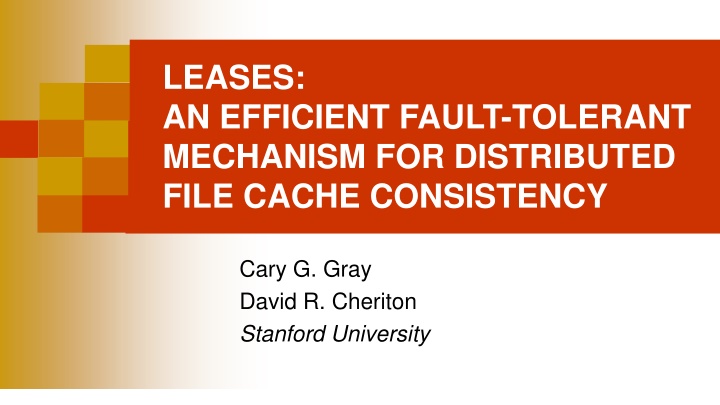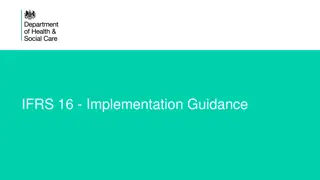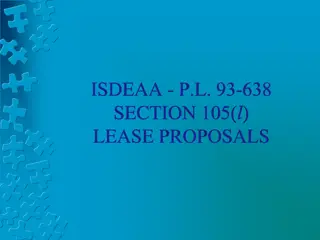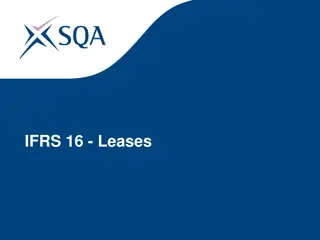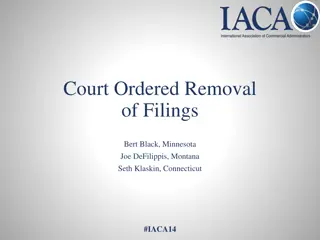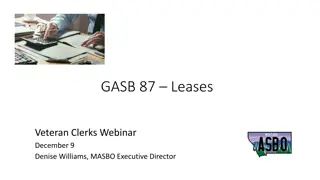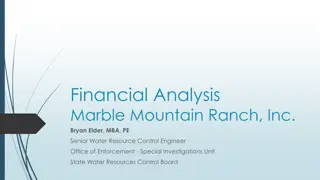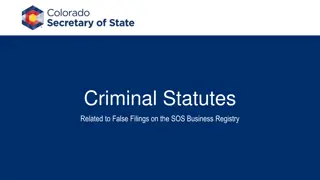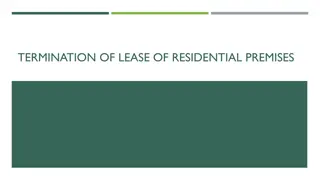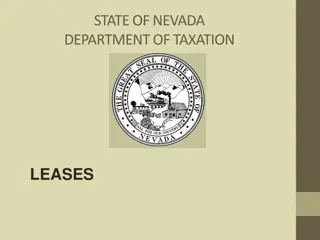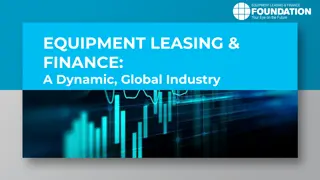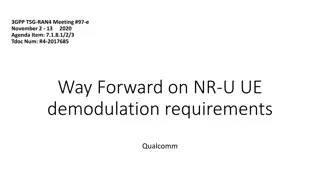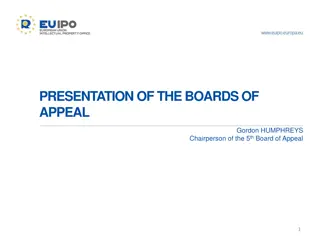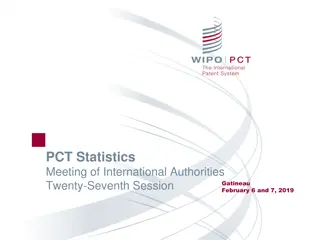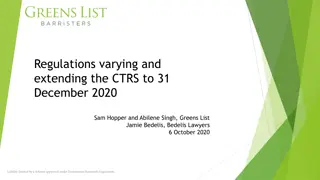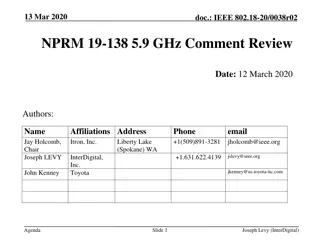Overview of Leases: Definitions, Durations, Filings, Trends
Dive into the world of leases with detailed definitions, duration types, filing requirements, and current trends in the leasing industry. Understand the roles of lessors, lessees, and the benefits of leasing for businesses.
Download Presentation

Please find below an Image/Link to download the presentation.
The content on the website is provided AS IS for your information and personal use only. It may not be sold, licensed, or shared on other websites without obtaining consent from the author.If you encounter any issues during the download, it is possible that the publisher has removed the file from their server.
You are allowed to download the files provided on this website for personal or commercial use, subject to the condition that they are used lawfully. All files are the property of their respective owners.
The content on the website is provided AS IS for your information and personal use only. It may not be sold, licensed, or shared on other websites without obtaining consent from the author.
E N D
Presentation Transcript
LEASES: AN EFFICIENT FAULT-TOLERANT MECHANISM FOR DISTRIBUTED FILE CACHE CONSISTENCY Cary G. Gray David R. Cheriton Stanford University
Paper highlights Best mechanism for maintain consistency in distributed systems Tolerates failures and network partitions Used in many distributed systems Ceph, GFS, Paper presents a write-though scheme Many variants have appeared since
Leases (I) A lease is a contract that gives its holder specified rights over property for a limited period of time. A lease grants to its holder control over writes to the covered datum during the term of the lease, such that the server must obtain the approval of the leaseholder before the datum may be written.
Leases When a leaseholder grants approval for a write, it invalidates its local copy of the datum. When a client writes a datum, the server must defer the request until each leaseholder has granted approval or the term of its lease has expired.
An example (I) Server Grants a lease Requests a lease Duration of lease Must now Alice Alice controls the file renew it Time
An example (II) Also requests a lease Server Got a lease Bob Alice Time
An example(III) Also requests a lease Server Got a lease Try to break the lease Bob Alice Time
First case: Server can reach Alice Also requests a lease Server Got a lease Try to break the lease Bob The lease is broken Alice invalidates her cache Bob gets a lease Alice Time
Second case: server cannot reach Alice Also requests a lease Server Got a lease Bob must wait Try to break the lease Bob Alice Bob s lease Time
Big advantages of leases Both more rigorous and cheaper then NFS solution Consistency is guaranteed Little or no overhead as long as the file is not shared Solution is not stateless No problem as long as lease durations are shorter than minimum server reboot time
When not to use leases When availability is more important than consistency Want to let client keep operating when disconnected Infinite leases Clients do not have to renew leases Not true leases, better to call them callbacks
Discussion Leases are short Require well synchronized clocks and reasonable transmission delays Can require/obtain leases for collections of items A directory and all its files.
An example When server receives Bob's request, It will try to contact Alice and break the lease Alice will invalidate the contents of her cache If Alice does not answer, server must wait until Alice's lease expires
Write-through or write-back caches Gray and Cheriton assume caches are write-through Clean failure semantics A client that breaks/loses a lease has one thing to do: Invalidate its local copy of the datum Could also have write-back caches Work best with clients having a local disk/SSD A client that breaks/loses a lease has one more thing to do: Send update copy of datum to server
Analytic Model (I) Server and N clients Reads and writes are exponentially distributed with rates R and W Message processing time ????? is same for everyone So is message transmission time????? Total message transmission time is ?????+ ?????? Sender processes the message Message is transmitted Receiver processes the message
Analytic Model (II) Can multicastmessages Roundtrip time is ??????+ (? + ?)????? (? + ?) ?????at server ??????at each client Effective term of lease with nominal term duration ?? t? = max(?,?? (?????+ ??????) ?)
Explanations For a multicast request Server processes the multicast message Multicast message is being transmitted ? clients process multicast message in parallel ? clients process their reply messages in parallel ? replies are transmitted in parallel Server processes the ? replies in sequence
Read lease overhead (I) Without leases, server would process ?? requests per time unit ??? messages With leases of duration ??, each lease request allows 1 + ??? reads to be performed locally 2?? 1+???messages per time unit Server now processes
Read lease overhead (II) A leases request takes ??????+ ?????? time units Average resulting delay per request is ??????+?????? ?+???
Write lease overhead Assume file is shared by ? clients When a client wants to perform a write Server multicasts request to all other clients holding a lease (? 1) Assuming the original request included implicit approval Total of ? messages including original request Time ?? to get approval is ??= ??????+ (? + ?)????? for ? > 1
Explanations Granting a write lease Server processes the write lease request Server processes its multicast message Multicast message is being transmitted ? 1 clients process multicast message in parallel ? 1 clients process their reply messages in parallel ? 1 replies are transmitted in parallel Server processes the ? 1 replies in sequence
Combining both We assume ?? ?? unless ??= ?(zero-term lease) For ? > ? and ?? > ?, 2?? 1+???+ ??? consistency-related Server sends and receives messages per unit time Average overhead is ?+?(?(?????+??????) ? + ???) ?+???
Number of caches in which the file is shared Lower is better 10 seconds seems to be the best choice
Infinite leases Clients do not need to renew them Can still access the data in disconnected mode When the server tries to break a lease and the client does not answer, the server breaks the lease anyways Can and will result in inconsistencies Solution privileges availability in the presence of partitions over data consistency Was used by AFS and Coda
Conclusions Leases are the best mechanism for managing client caches in distributed file systems Low overhead Guarantee data consistency Multiple variants have been proposed and implemented Have read leases and write leases
